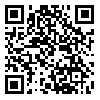BibTeX | RIS | EndNote | Medlars | ProCite | Reference Manager | RefWorks
Send citation to:
URL: http://tumj.tums.ac.ir/article-1-717-en.html
Background: Acute respiratory tract infections, both bacterial and viral, cause 4.5 million childhood deaths worldwide, most of which occur in developing countries. Parainfluenza viruses, of the paramyxoviridae family, are among the common causes of acute respiratory infections, giving rise to 30% of respiratory infections in children before school age. The four parainfluenza viruses that cause a spectrum of respiratory illness in humans are designated as human para influenza virus-1 through 4. Spreading from the respiratory tract by aerosolized secretions or direct hand contact with secretions, parainfluenza viruses replicate in the respiratory epithelium without evidence of systemic spread. The destruction of cells in the upper airways can lead to secondary bacterial invasion and resultant bacterial tracheitis. Eustachian tube obstruction can lead to secondary bacterial invasion of the middle ear space and acute otitis media. In otherwise healthy children, the majority of illnesses remain in the upper respiratory tract. As with many viruses, three approaches to the diagnosis of parainfluenza virus are currently used: viral culture, detection of viral antigen or nucleic acid, and serologic analysis. The gold standard remains the isolation of virus in tissue culture.
Methods: This descriptive case-series study was conducted from January 2003 to January 2004, and included 96 children five years of age and younger. To determine the relative frequency of parainfluenza respiratory tract infection, the nasopharyngeal secretions were studied by immunofluorescent antibody (IFA) assay. Seasonal incidence, age distribution and clinical signs and symptoms of this infection were also recorded.
Results: Among our study group, the relative frequency of parainfluenza respiratory infection was 26%, most commonly in children aged 25-36 months and in autumn. Cough (84%) and rhinorrhea (96%) were the most common symptoms, with fever (68%) as the most common sign in our patients. Pharyngotonsilitis was the most common (40%) clinical manifestation in our patients.
Conclusions: According to above data, patient age and the frequency of parainfluenza infection were similar to other studies.
| Rights and permissions | |
 |
This work is licensed under a Creative Commons Attribution-NonCommercial 4.0 International License. |





